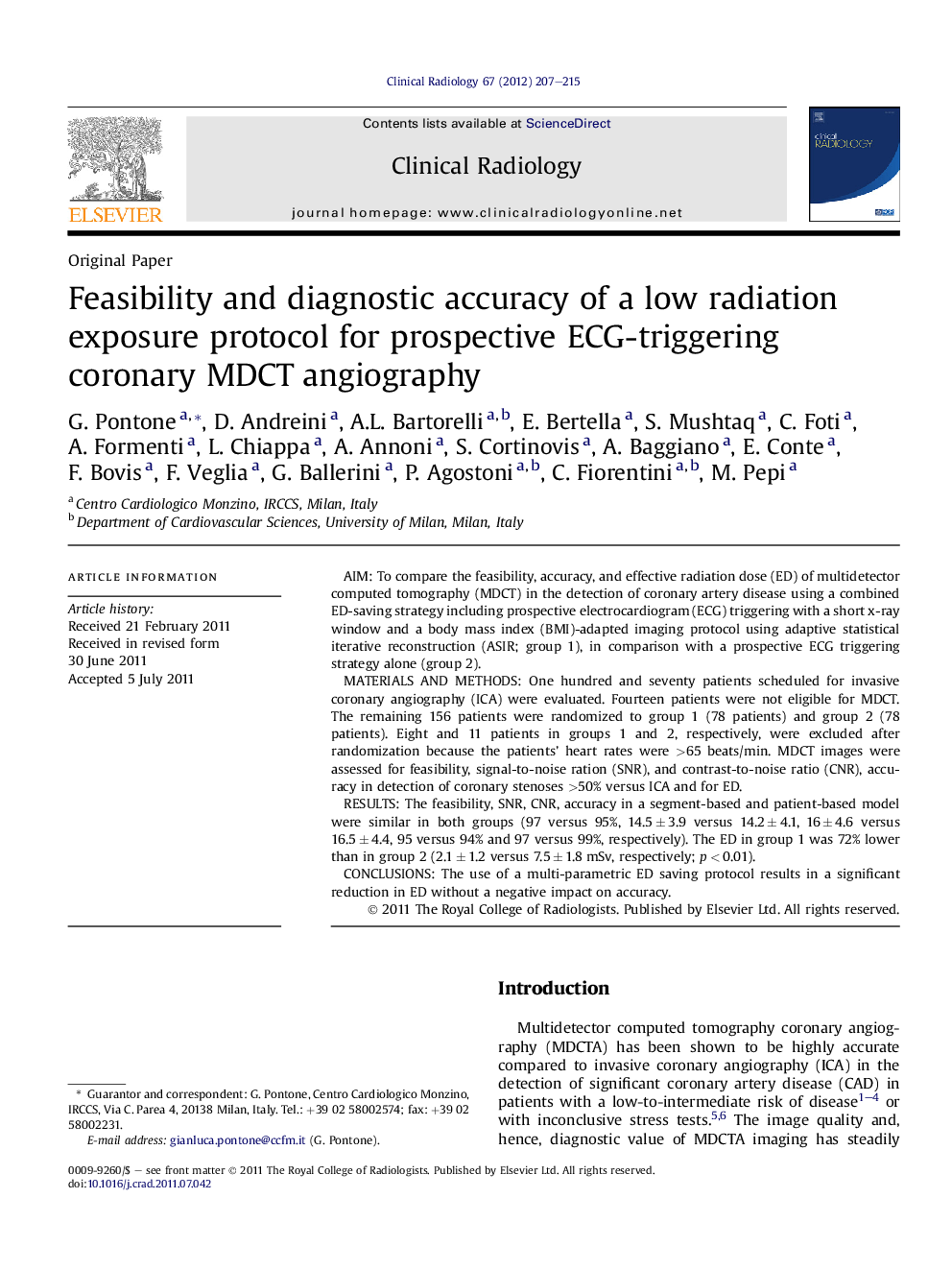| Article ID | Journal | Published Year | Pages | File Type |
|---|---|---|---|---|
| 3981683 | Clinical Radiology | 2012 | 9 Pages |
AimTo compare the feasibility, accuracy, and effective radiation dose (ED) of multidetector computed tomography (MDCT) in the detection of coronary artery disease using a combined ED-saving strategy including prospective electrocardiogram (ECG) triggering with a short x-ray window and a body mass index (BMI)-adapted imaging protocol using adaptive statistical iterative reconstruction (ASIR; group 1), in comparison with a prospective ECG triggering strategy alone (group 2).Materials and methodsOne hundred and seventy patients scheduled for invasive coronary angiography (ICA) were evaluated. Fourteen patients were not eligible for MDCT. The remaining 156 patients were randomized to group 1 (78 patients) and group 2 (78 patients). Eight and 11 patients in groups 1 and 2, respectively, were excluded after randomization because the patients’ heart rates were >65 beats/min. MDCT images were assessed for feasibility, signal-to-noise ration (SNR), and contrast-to-noise ratio (CNR), accuracy in detection of coronary stenoses >50% versus ICA and for ED.ResultsThe feasibility, SNR, CNR, accuracy in a segment-based and patient-based model were similar in both groups (97 versus 95%, 14.5 ± 3.9 versus 14.2 ± 4.1, 16 ± 4.6 versus 16.5 ± 4.4, 95 versus 94% and 97 versus 99%, respectively). The ED in group 1 was 72% lower than in group 2 (2.1 ± 1.2 versus 7.5 ± 1.8 mSv, respectively; p < 0.01).ConclusionsThe use of a multi-parametric ED saving protocol results in a significant reduction in ED without a negative impact on accuracy.
